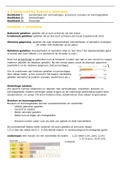Samenvatting
CSB351 Term Test 2 Summary Notes
- Vak
- Instelling
Complete and in-depth Term Test 2 Summary Notes for CSB351 for EXAM prep. Kevin has combined notes from his peers and his own work to provide the most complete and comprehensive study guide for all types of students. He has achieved an overall cumulative GPA of 3.95 during his undergrad at the Univ...
[Meer zien]




